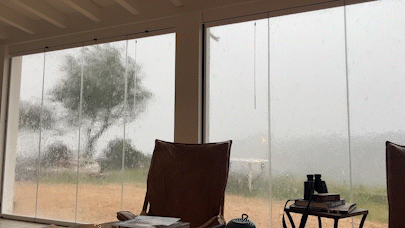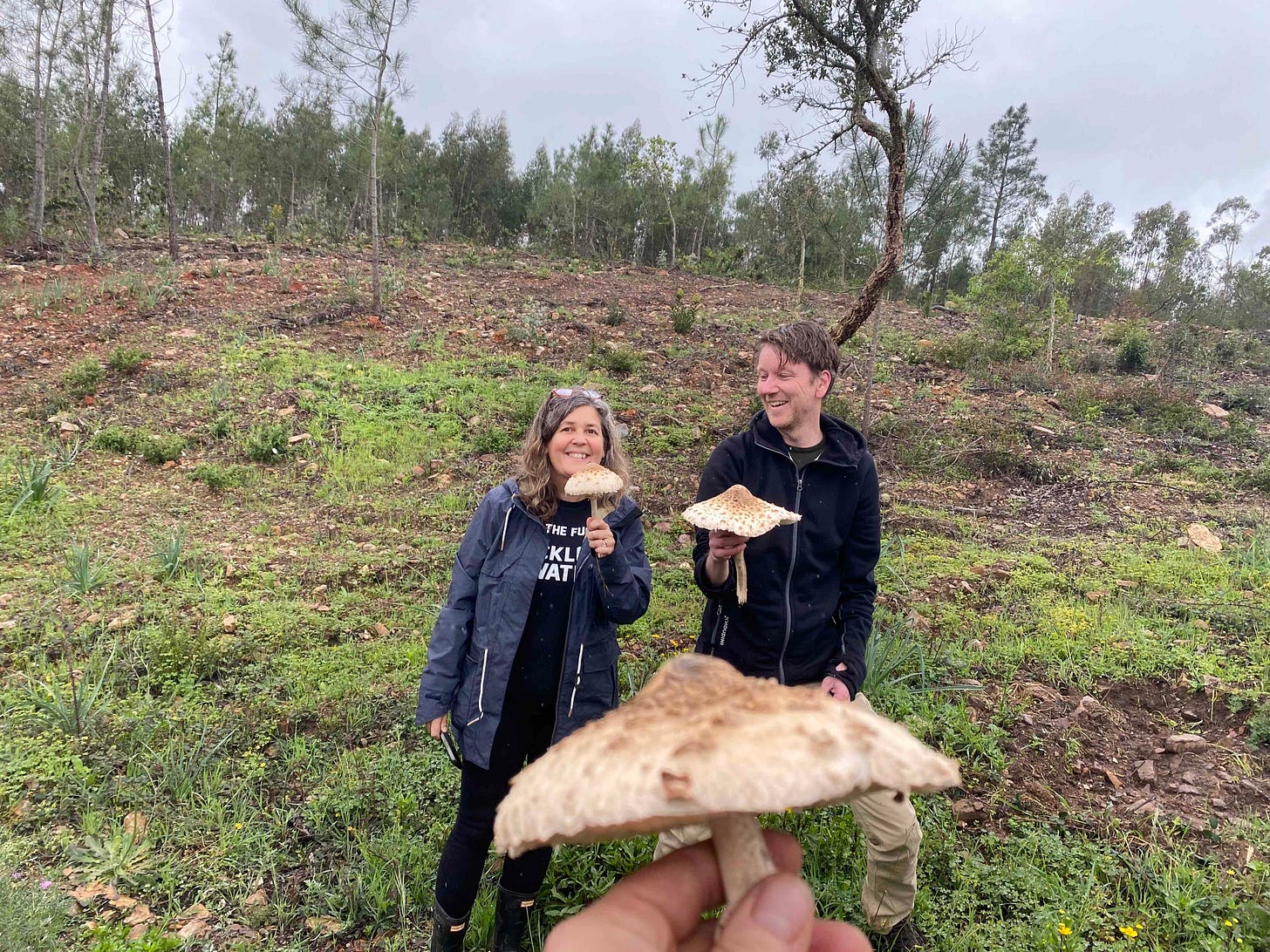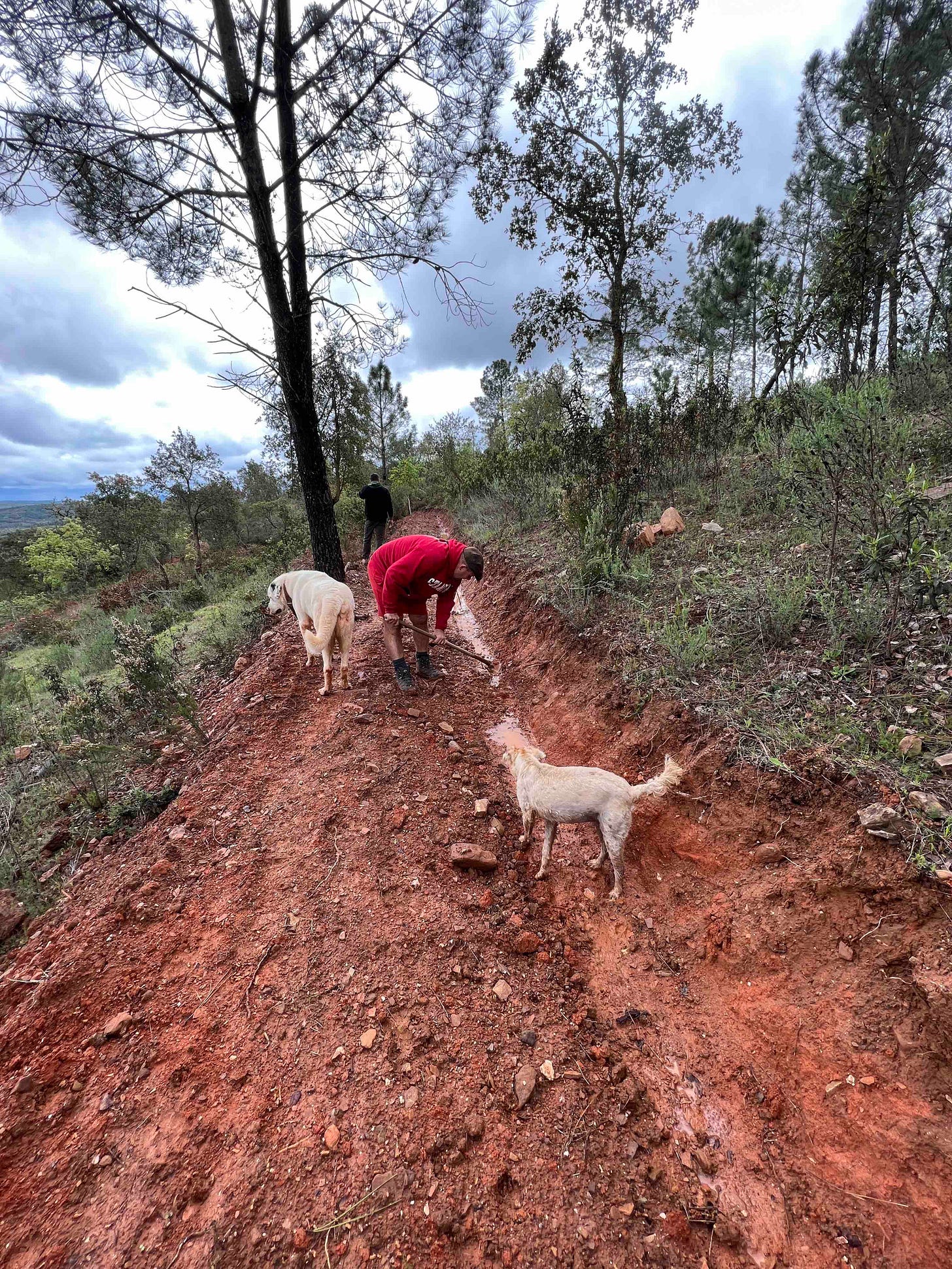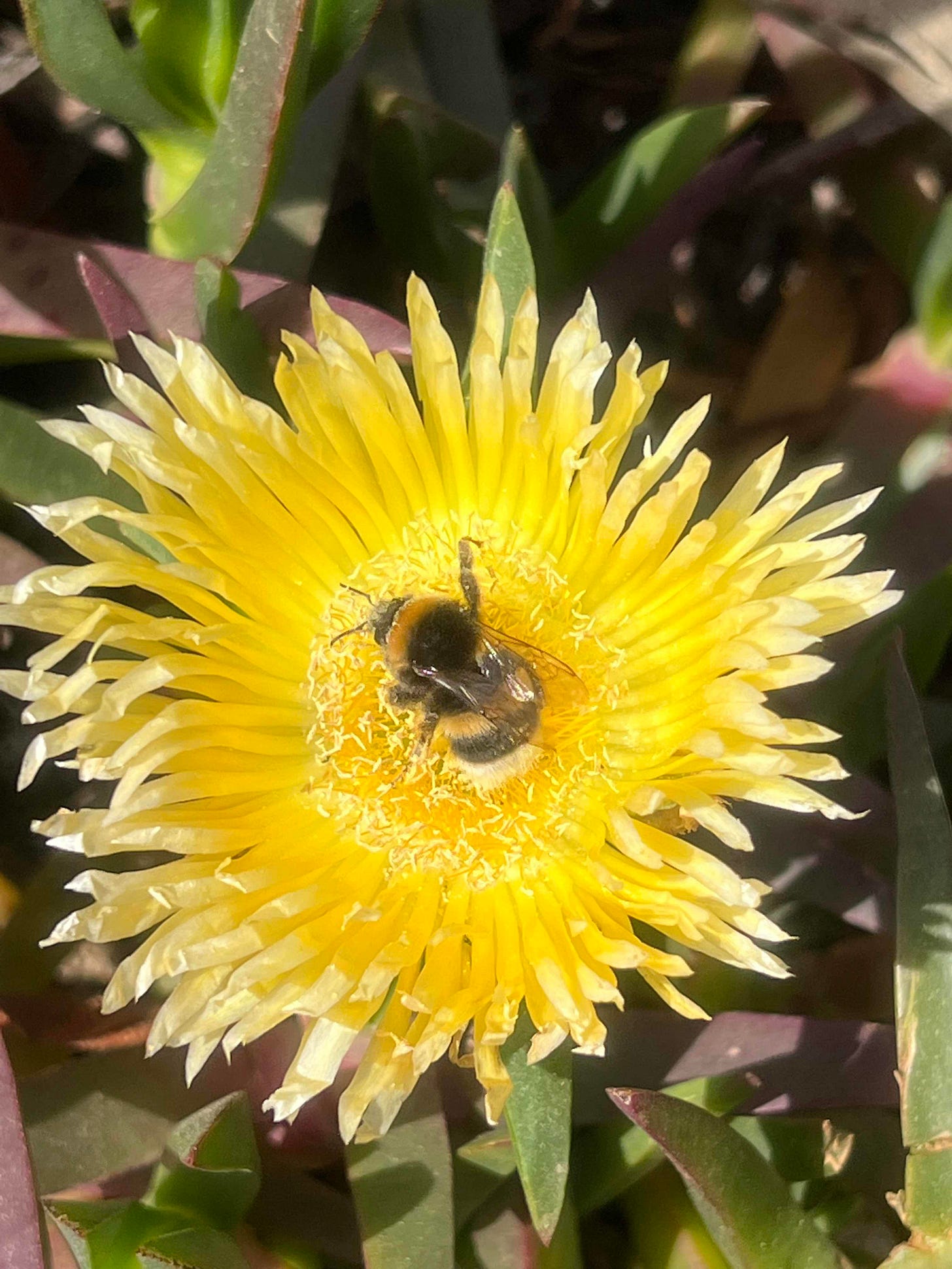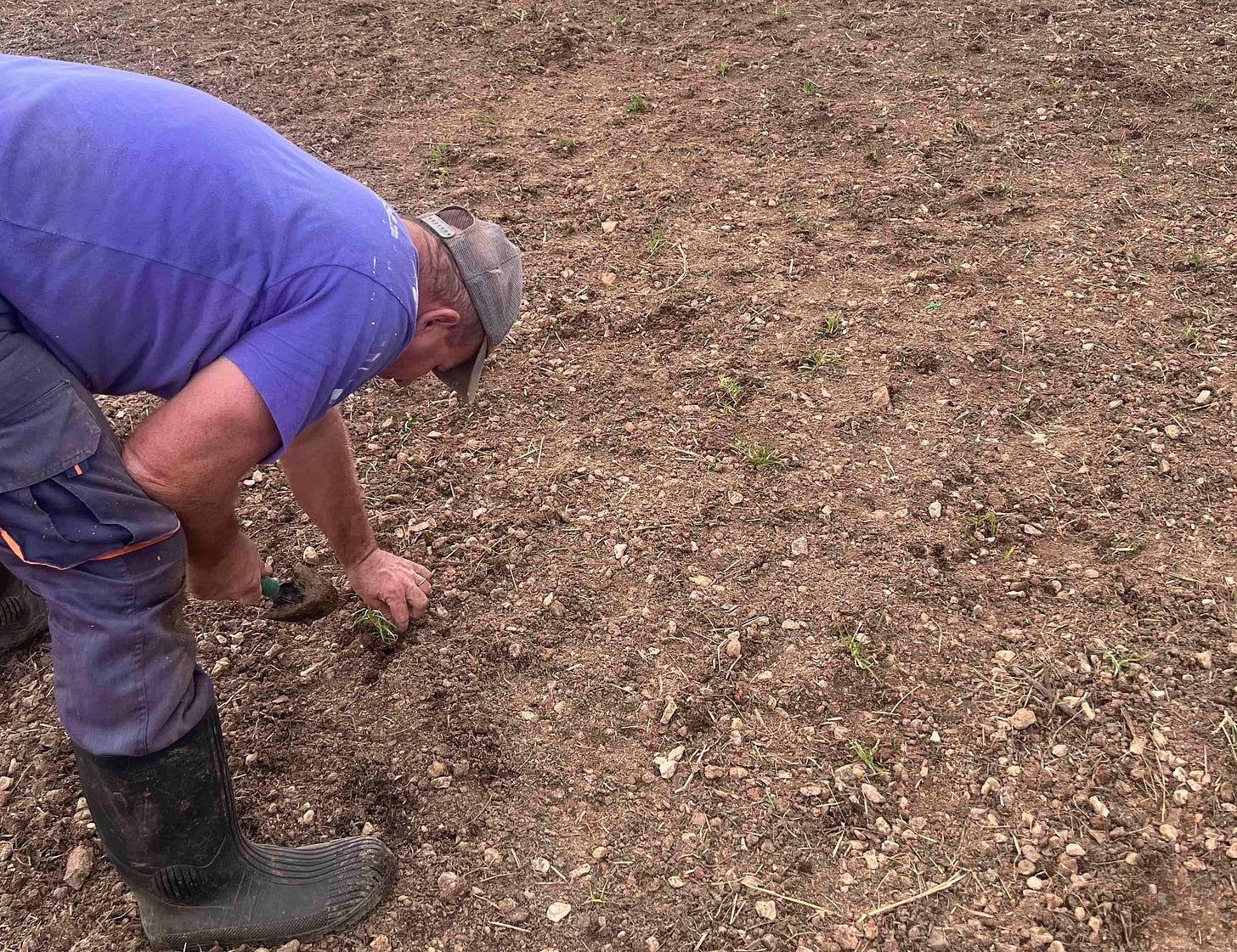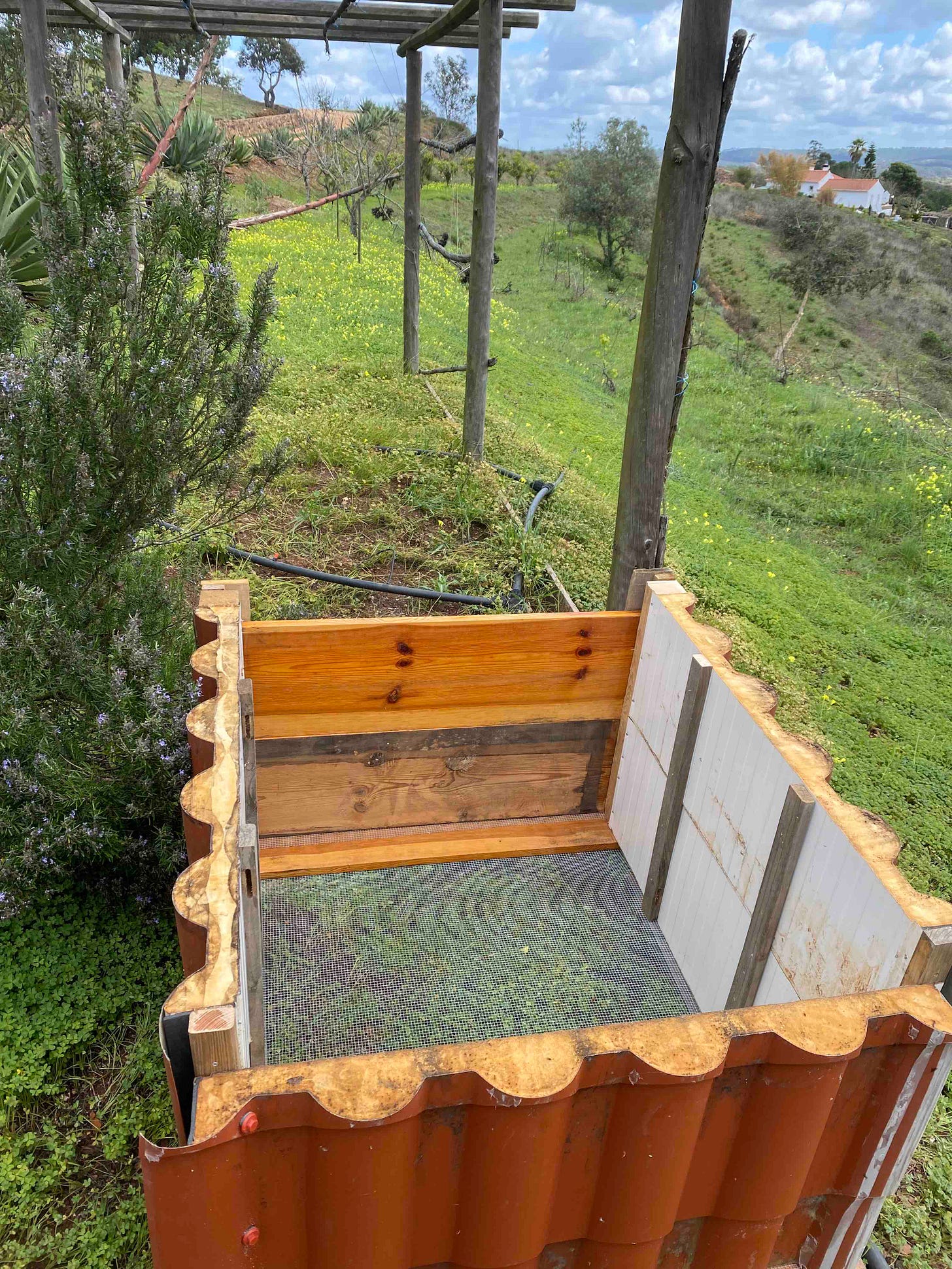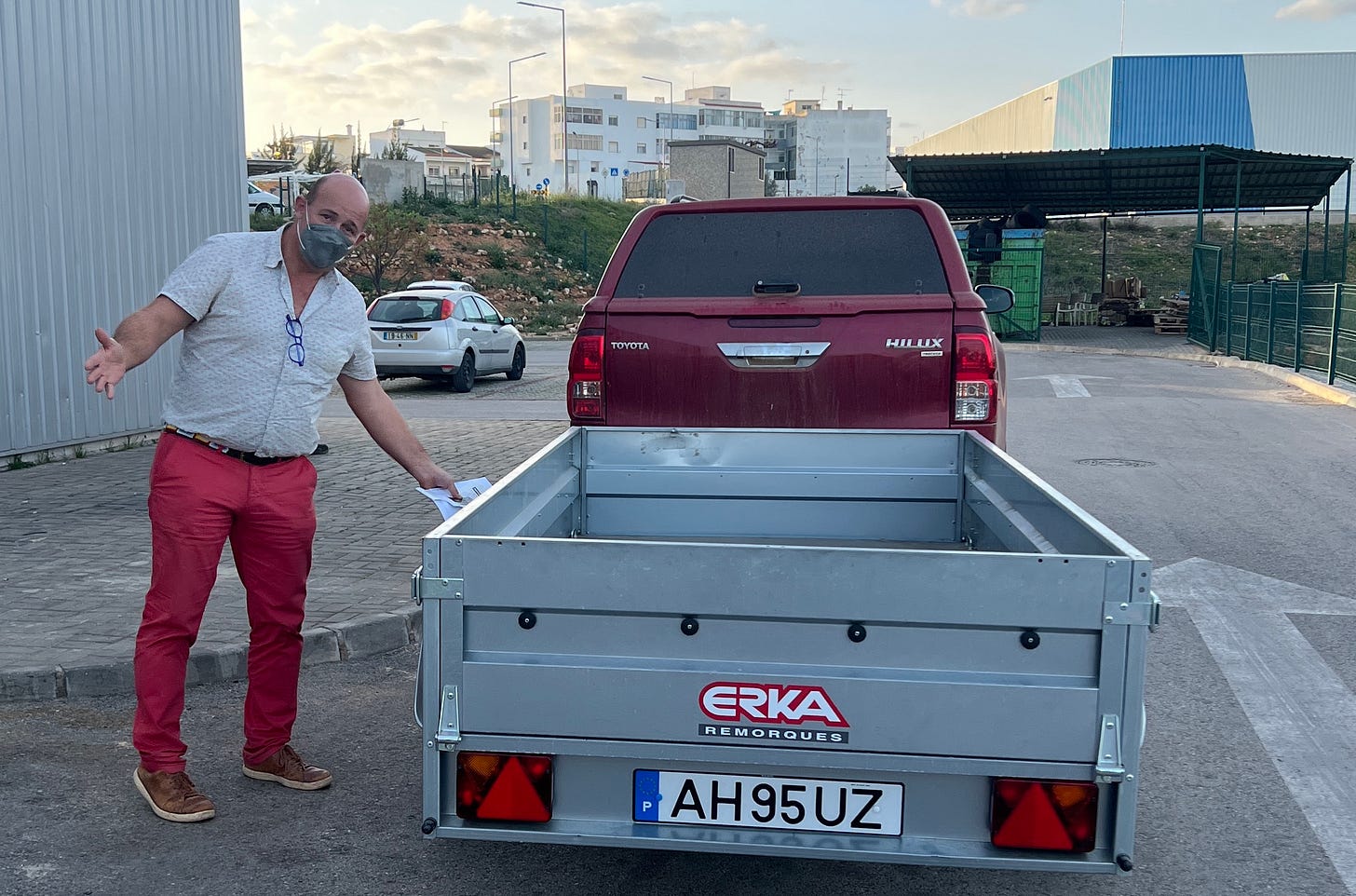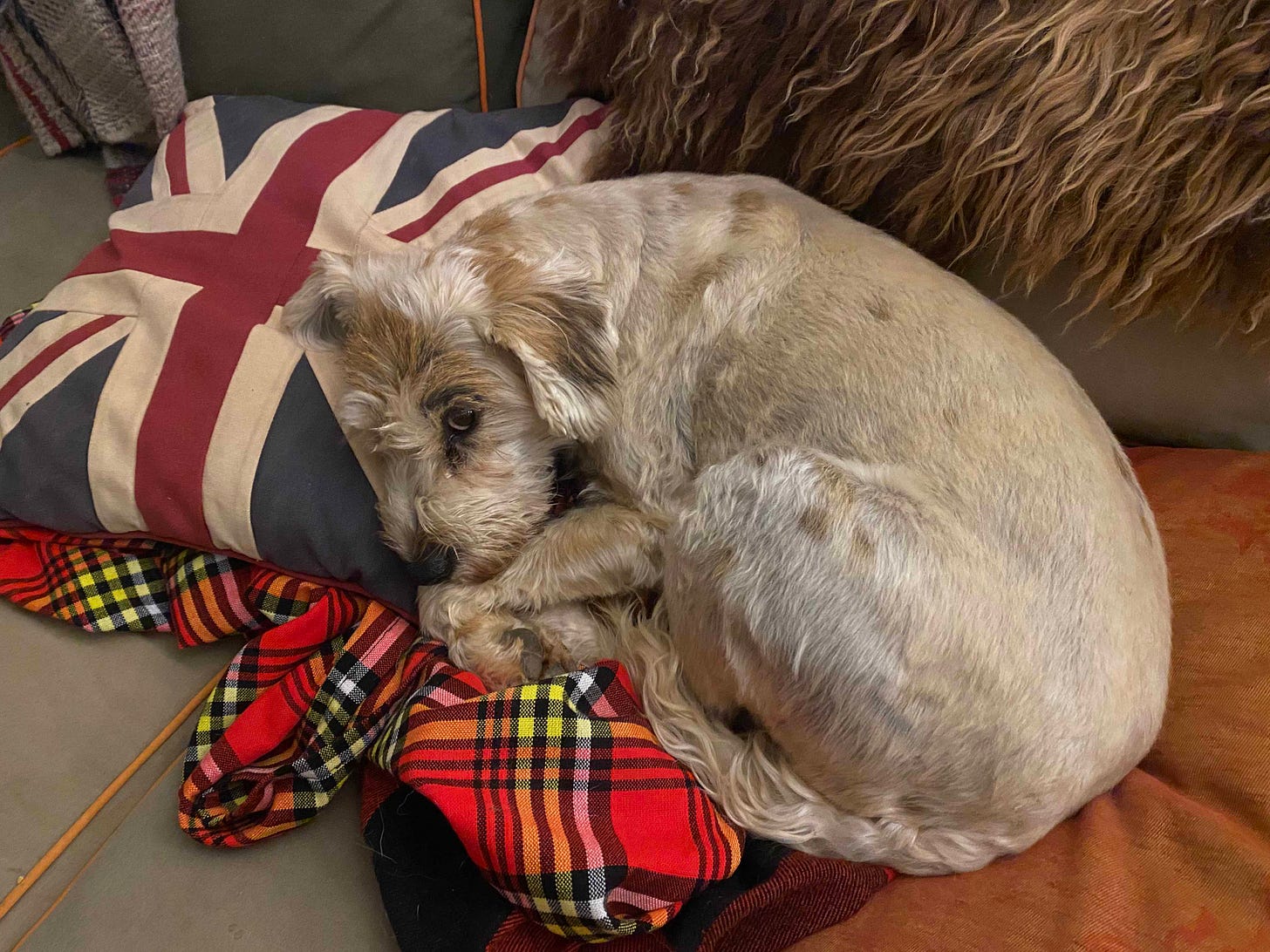Getting down and dirty
Rain finally reaches the valley
All the naked dancing, ritualistic chanting and blood sacrifices appear to have paid off.
Rain finally arrived in Vale das Estrelas this week in large enough quantities to start raising the lake level.
The downpours not only got some water moving through the swale tracks for the first time, but have also inspired us to get down and dirty to dig, plant, clip and compost our way through our Spring to-do list.
It’s made mushrooms race out of the ground creating umbrellas big enough to make lunch for three, and prompted orchids to start popping up all over the place – in all sorts of shapes and sizes.
And it’s encouraged the non-cork oaks (which are deciduous) to burst into a vivid green and given the brambles and all other associated spiky weeds the joie de vivre to go nuts...knowing I have to strim them all by May in the interests of fire safety.
So, after weeks of waiting and worrying, we can now stop taking drafts of Simon and Garfunkel’s blood and smearing it around the property – for a while at least.
In just a few days the water level has leapt perhaps as much as three centimetres – and we have been carrying out scientific experiments to prove it.
The rock on the lake side, in lieu of a high-tech laser level meter, has gone from being a bit above the water level to almost touching it – and if that isn’t proof of significant progress I don’t know what is.
We could certainly do with more rain, and hopefully several storms will be on the way, but weather forecasts here are notoriously inaccurate.
When the app says 99% chance of rain it’s usually 50/50 or lower: we can have predictions of 22mm reduced to 0.4mm in a mere moment.
As you can see, I have been spending far too much time fretting over Weather Underground which seems to be the best app I’ve found so far.
With the in-depth knowledge gained through a Geography degree only 30 years ago (and a fantastic teacher at the RGS school – thank you David Rhodes) I know a mid-latitude depression when I see one.
That’s the easy bit – the little families of cold, warm and occluded fronts keep coming from America – but here it’s the influences of high pressure drifting up from Africa or east from the Atlantic which cause the problems.
A few degrees of latitude here and there and the frontal rain eases north and Lisbon gets all our wonderful moisture (although I think they’d rather we kept it).
Combined with the rain shadow effect created by Monchique mountain in the Algarve we sometimes miss out altogether.
When water’s this important you put in the research, let me tell you.
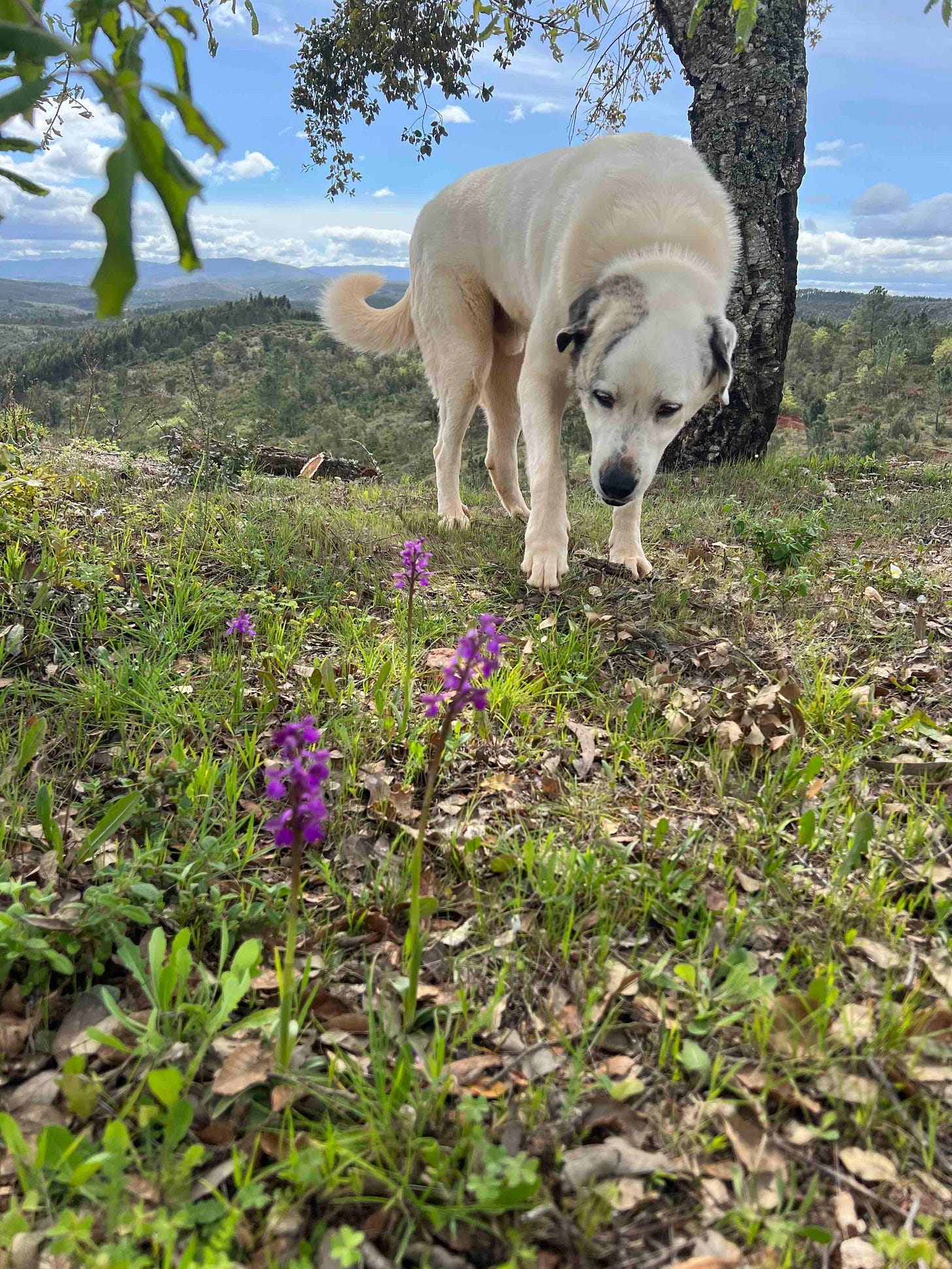
We had a bit of a false start to the stormy weather when the red mist descended and the air choked us, leaving a layer of Saharan sand over everything.
The dust storm even reached the UK I gather and it has a name: the Rayleigh scattering phenomenon – the filtering of light which creates a red and orange sky colouring.
But once the heavens had properly opened for a few days, our attention turned to the new swales and whether they were helping guide water down into the lake as promised.
The ground was so dry it took some soaking before we got much in the way of surface water.
It’s early days for the newly-cut paths, but water is starting to flow and we are starting to see where we need to tweak the angles a bit to make the most of the moisture.
We might have taken out a couple of hectares of thirsty eucalyptus trees since the last rains, but by digging a metre or more down to extract their roots we created a massive sponge.
Landscaper Carlos assures us it’ll make its way to the lake in time – perhaps in a month or two we will benefit – but it would be so much more reassuring to see the water overwhelming the level rock.
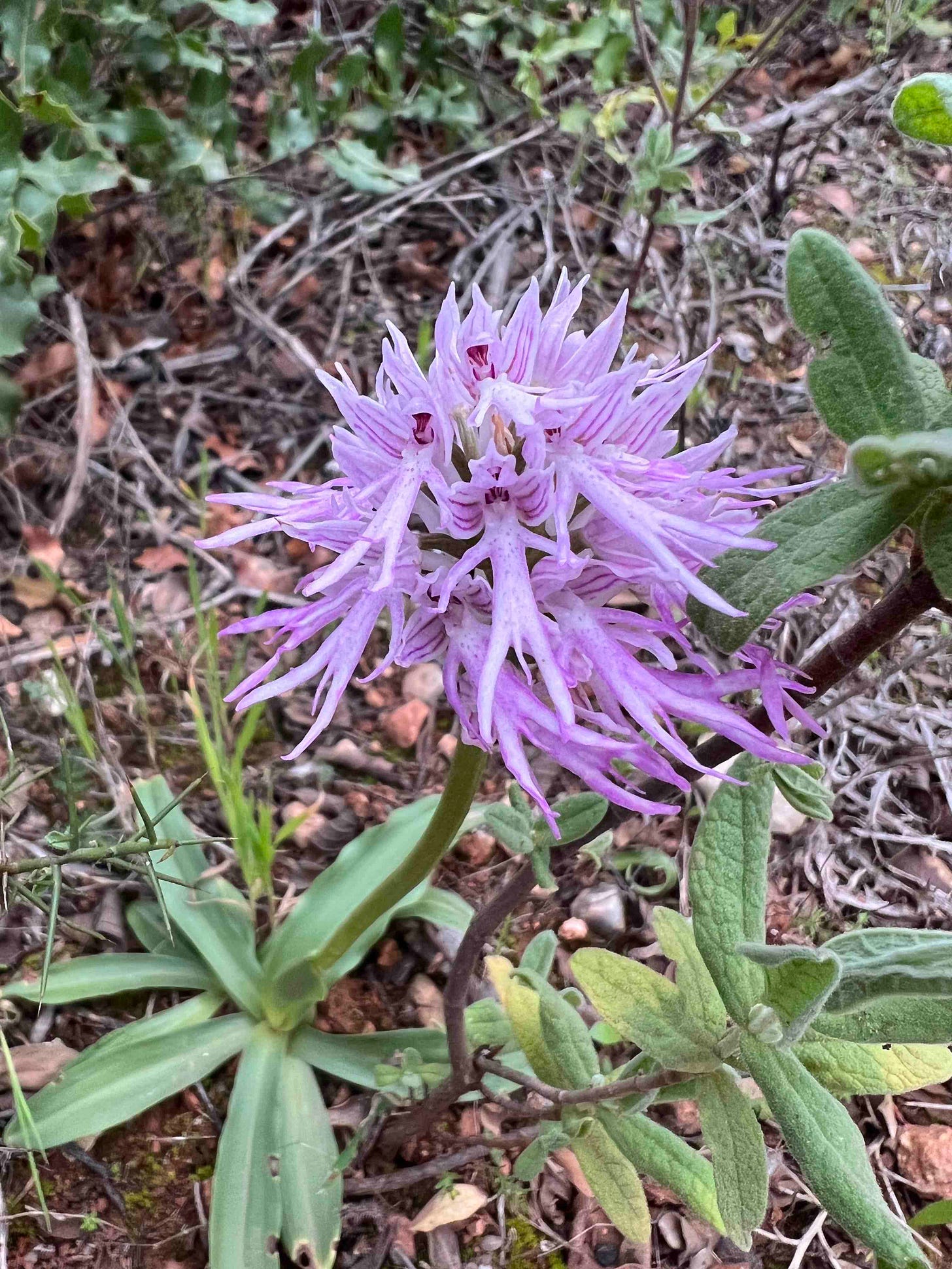
With so much clay soil we need a good soaking to get stuff done and one project for this year was to get some Kikuyu grass growing in front of the guesthouse.
It’s been a drawn-out process beginning with Carlos clearing all the gravel onto the drive and then breaking up the clay with his mini-digger.
We then brought in the horse manure compost and removed big rocks last week so one of Carlos’ guys could run a ploughing machine through it all.
All that was left was for us to rake it, level it, remove more stones and to plant about 150m2 of grass.
The summers here are obviously hot and dry and so a lawn needs a bit of thought.
We first came across Kikuyu grass living in Kenya and then Carlos told us he’d been using it here for a few years.
Once planted by seed or by cuttings, it grows and spreads very quickly, choking out other weeds and grasses and creating a soft spongy mat – and crucially once established it needs little water.
So how does one get hold of such wonderful material? Why by stealing it of course.
Our friend and my former colleague Firle bought a place here in Portugal a couple of years ago and she went the kikuyu route early – planting it last year outside her house and loving the result.
So while she was running around the front lines of Ukraine avoiding incoming fire for the BBC, we were sneaking into her backyard to pilfer her grass.
Her kikuyu had established itself brilliantly and all the rain has given it a boost of growth, and so with buckets in hand we pulled and pruned, snipped and stole.
Ana was so guilty that she started weeding while Måns and I did the dirty work, but it was so well established our extracions didn’t make any difference at all to the look of the lawn.
And then all we had to do then was to plant hundreds of clippings into our prepared ground: backs, legs and shoulders are all sore this weekend...but my weight is already down by 2.5kg so no complaints!
For the last two weeks Måns has been staying with us – helping out from his experience of house reconstructions and off-grid living in his Swedish summer house.
Building the compost was the first job he helped me with, so it was fantastic to get that finished and ready for all the organic waste that’s been piling up while we built it.
Ana studied sustainable agriculture during our year at Stanford and so she suggested we used dried oak leaves and branches for the bottom brown layer, a green layer of grass and weed clippings and then the organics covered with a layer of soil.
For the next layer we have the offer of another trailer load of horse manure courtesy of our friends in the valley...and now that Carrie has arrived we’ll be all set.
There was much discussion over what to call the new trailer we’ve bought with our neighbour Daniel (who’ll back soon – yay!).
The suggestions Trailer Trash Tracy, Pull-it-zer and Carry have been adapted to give her the thoroughbred name of Carrie T Pullitzer, but seeing as Cassie the Hilux will be doing most of the towing, I’m loving the whole “Cass and Carrie” thing.


